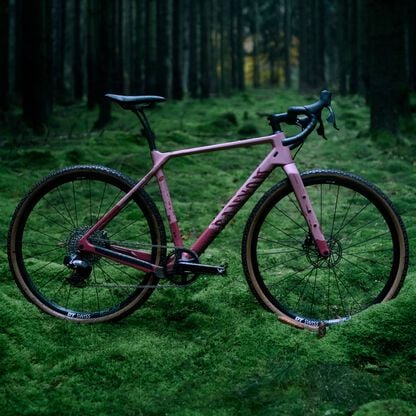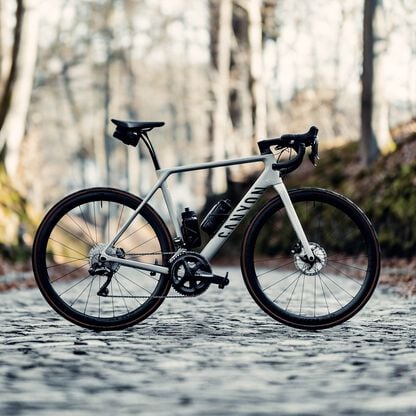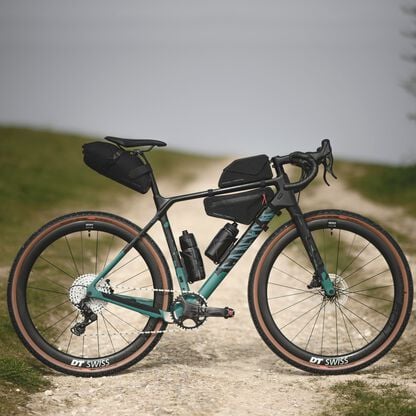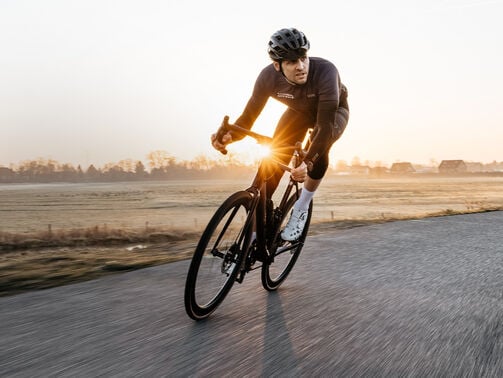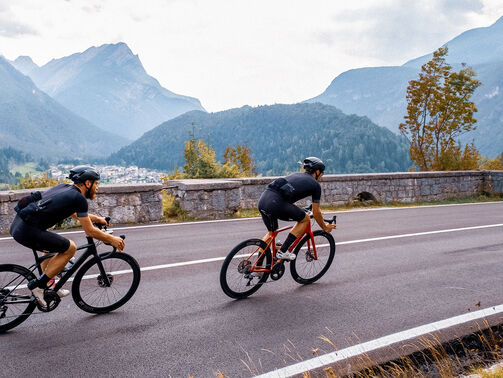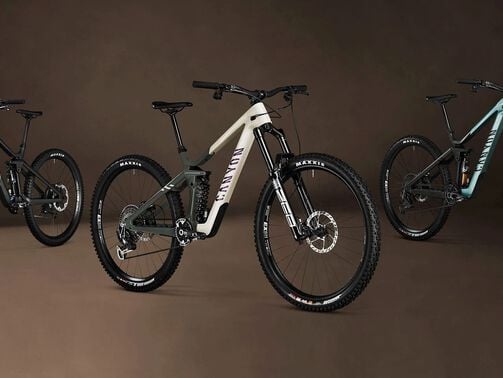Gravel bike vs. hardtail MTB: Which is better?
Explore the differences between gravel bikes and hardtail mountain bikes. Compare features, performance, and terrain compatibility to make an informed choice.
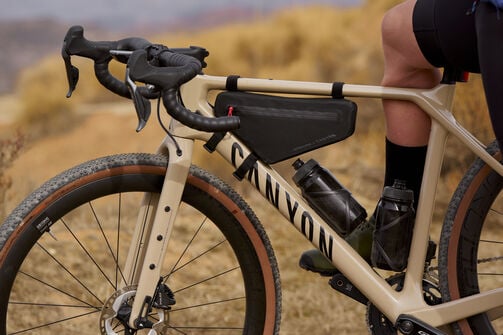
Maybe you’ve heard people say that modern gravel bikes are “just 90s hardtail mountain bikes with drop bars”. It’s a good line, but equating these two distinct styles is flawed for a couple of reasons – not least because it’s no longer the 90s and hardtails have come a long way since then. In this guide, we break down the differences between gravel bikes and hardtail mountain bikes, including a close look at the sorts of terrain each type is best at.
Contents
Gravel bike vs. hardtail MTB: geometry differences
Gravel bikes, also known as all-road bikes, borrow much of their geometry from endurance road bikes, but with some adjustments to keep you stable over rougher terrain. Most gravel models, including Canyon’s performance gravel bike, the Grail, have a longer wheelbase and slacker headtube angle than a traditional road bike for more confidence and stability on off-road adventures. Gravel bikes also have wider handlebars with flared drops for easier handling over technical sections and more options for both comfortable and aggressive riding positions.
By contrast, hardtail mountain bikes prioritise pedalling efficiency and stability, with a longer wheelbase and steeper headtube angle to put you in a more upright riding position. That steep headtube angle makes for quicker handling at lower speeds but can feel sluggish on flatter and smoother surfaces. Hardtails have a suspension front fork, but no rear suspension, so they still ride pretty fast when you want them to on the flat.
For a more in-depth look at the specifics of mountain bike geometry, be sure to check out ours beginner’s guide.
We’ll take a closer look at how geometry affects your ride experience later on in the guide but for now, here’s the quick summary:
- Gravel bike positioning is considerably more aggressive than a hardtail, while being less aggressive than a performance road bike.
- Hardtails are more upright and stabler on rough stuff than gravel bikes, but will handle slower on flat and smoother surfaces.
What is the difference between gravel and MTB tyres?
Tyre size is one of the differences between gravel bikes and hardtails that will have the most impact on your riding experience. Because gravel bikes are designed for navigating around obstacles rather than rolling straight over them, gravel bike tyres tend to be smaller than those found on hardtail mountain bikes.
That being said, there is a lot of crossover, particularly with the hunger of gravel riders for frames with more and more clearance. Our Grizl CF SL 6 AXS, for instance, can accommodate tyres up to 50mm.
Generally speaking the window for gravel tyres is 32mm to 55mm (1.5” to 1.9”), while mountain bike tyres begin around 45mm (1.8”) and go up to 66mm (2.6”) and beyond.
It isn’t just the width of the tyres that makes the difference. Gravel tyres have a less aggressive tread pattern than mountain bike tyres, making them suitable for both off-road riding and paved detours. The knobbly tyres typical of mountain bikes are perfect for keeping traction on rocky trails but can hold you back on the roads.
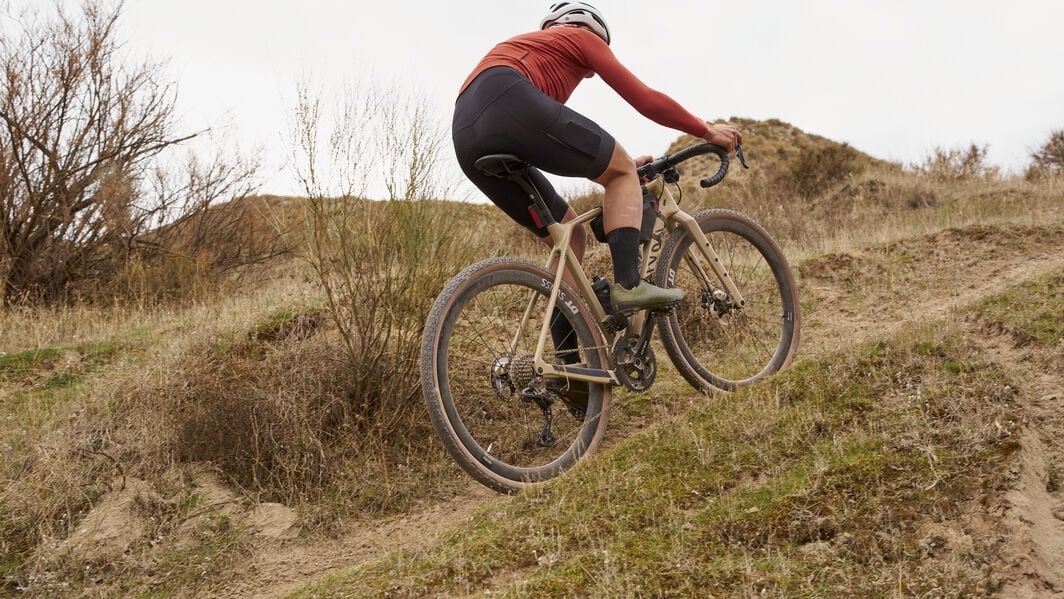
Performance comparison: speed, stability, and handling
As we touched on earlier when we took a look at the geometry differences between gravel bikes and hardtails, the two types of bike will feel very distinct. Because of this, it’s important to consider what you want to get out of your ride experience before you decide which to go with.
If your priority is speed with the capability to take on the occasional techy bit of trail, a gravel bike will be your ideal adventure companion. Gravel bikes are made for going fast, and their similarities to road bikes mean that they can hold their own on the pavement as well as on the rough surfaces. Gravel bikes also handle similarly to a road bike, with fast performance on flatter, smoother surfaces. However, you will compromise slightly when it comes to stability. While more stable than a road bike, if your adventurous aspirations take you down rocky and rooty mountainsides, the lack of suspension and generally narrower handlebars can make fast descents feel sketchy.
By contrast, hardtails excel on the downhills. Their greater stability, suspension fork and optional extra features like dropper posts will give you extra confidence when you’re headed down the mountainside. The compromise with a hardtail comes with their speed. Hardtails will be slower on the flats and uphills, and their upright riding position means that their handling can sometimes feel a bit sluggish.
Get into gear: using accessories and equipment with your gravel bike or hardtail
What sort of gear you’ll be carrying can also be a factor when making a decision on what bike type to go with. If you have epic self-supported off-road adventures in mind, having enough space to carry everything you’ll need is a must. Gravel bikes are often designed with bikepacking in mind, meaning that they come equipped with extra mounts for carrying top tube, frame or fork bags without having to deal with extra straps.
While hardtails can be an excellent choice for bikepacking adventures on rougher terrain, fitting everything you’ll need on them can be a challenge. Hardtails often have fewer mounting options, and the fact that many hardtails have dropper posts means that finding a seat post mounted bag that won’t interfere with your rear tyre on tricky descents can be difficult.
And don’t forget that extra kit means extra weight – and if your bike is heavier than usual you may need a couple of extra teeth on your cassette to help you winch your way up the inclines. Most modern gravel bikes run 1x systems, similar to those of a hardtail, though with drop bar shifters and a range of gear choices more reflective of road cycling. That means a narrower choice of gears, and your easiest gear is likely to be harder than the equivalent easiest gear on a hardtail. If you’re doing lots of loaded and hilly riding, and don’t want to grind your knees into dust, the hardtail is probably the way to go.
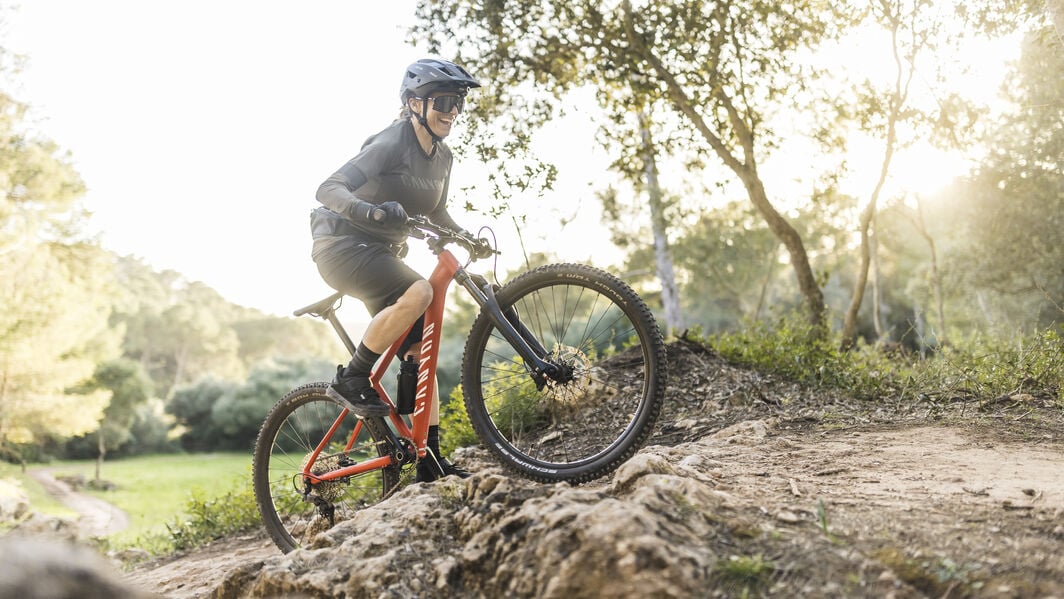
Ride experience – gravel vs hardtail
How a bike feels is arguably the most important part of your riding experience, and knowing how it’ll ride on different surfaces is key.
With its front suspension, a hardtail will be capable of taking harder hits than a gravel bike and will feel more fluid over rough terrain. However, the suspension will slow you down on smoother and flatter surfaces like roads, even in a locked-out position. The wider tyres will work in much the same way, rolling over bigger obstacles on the trails but creating drag that will hold you back on the roads or on lighter trails.
A gravel bike will be able to hold its own on the roads and the lighter trails, but the narrower tyres can limit where you are able to explore. The fast and agile nature of a gravel bike means that while it excels at speed, gravel bikes can feel less stable and confident on the trails. Some genre-bending gravel bikes do have front suspension forks as well, such as the Canyon Grizl Trail model, which will give you more opportunity to explore, though the travel will be shorter than that of a traditional hardtail.
Maintenance and durability: long-term considerations
When buying a new bike, it is important to think about how well that bike will hold up in the long term. While, generally speaking, your bike will look after you as long as you look after it, there are some things to consider when deciding between a gravel and mountain bike.
Hardtail mountain bikes will have a little more maintenance associated with them because of their suspension fork, which requires regular upkeep to keep it working its best. This is especially relevant if the hardtail you’re looking at has an air shock.
Though gravel and hardtail frames will have a similar durability, it is important to consider where you’ll be riding. As hardtails are often ridden over rougher terrain, they take more hits and parts like pedals and cranks can get damaged more easily than on typical gravel trails. The shortest lifespan would most likely be the gravel bike ridden on trails that are a little too challenging, with big hits from repeated drops and no suspension to dissipate the impacts.
Should you choose a gravel bike or a hardtail MTB?
Which type of bike is best for you will always come down to where your priorities lie. Are you looking for a lighter weight and fast bike that’s able to take on light gravel and trails, while still holding its own on the roads? Then a gravel bike will be better suited to your needs.
Or are you most at home when you’re dropping down hillsides, and looking for a bike that will handle smoothly and confidently on rocky trails? Then a hardtail mountain bike will be your ideal companion.
Be sure to check out our buyer’s guides for more advice on what to look for in a gravel or hardtail mountain bike. And for a deeper dive on which gravel bike is right for you, check out our comparison of our Grail and Grizl models.
Discover our Gravel Bikes
Did this article help?
Thank you for your feedback
